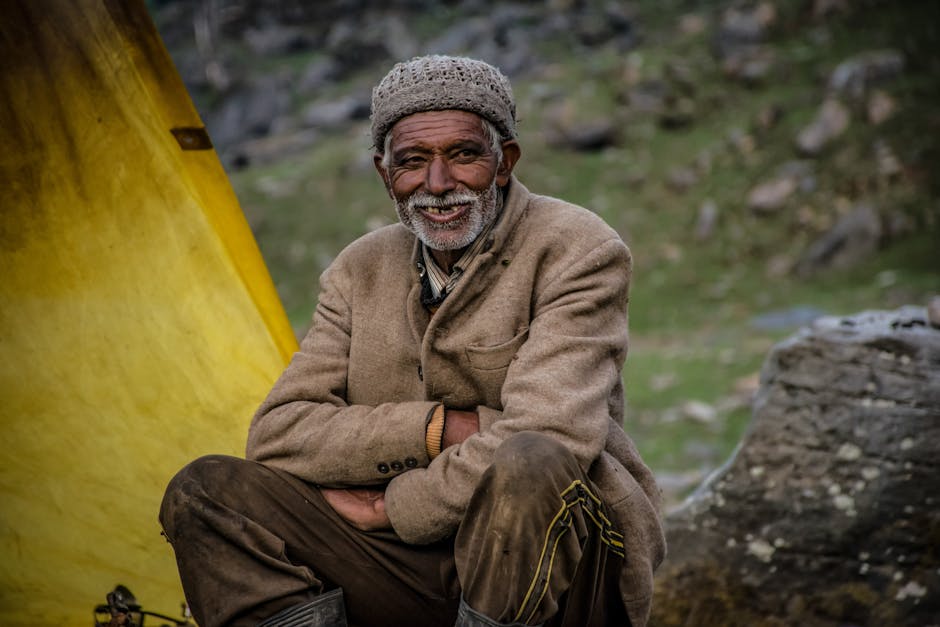Developing Strong Characters from People You Meet on the Road
Ever notice how the most fascinating characters in books or movies often have layers of complexity that make them feel real? One of the best ways to develop such characters is by observing people you meet on the road. Whether you're on a cross-country road trip, backpacking through Europe, or just commuting to work, the individuals you encounter are a goldmine for character-building inspiration. So, grab your metaphorical notebook (or an actual one), and let's talk about how to turn those random strangers into rich, fully realized characters.

Observing Mannerisms: The Devil’s in the Details
When meeting someone new, one of the first things you might notice is their mannerisms. How do they speak? Do they have a nervous tic? Maybe they drum their fingers when they're impatient or glance at their phone repeatedly in conversation. These seemingly small quirks can tell you a lot about someone's personality and provide details that can transform a character from flat to lifelike.
For instance, I once met a man while traveling through a small town in Italy. He had a habit of rubbing his jaw every time he was about to tell a story, almost like he was testing whether it was worth sharing. In fiction, that little gesture could say so much about a character who is cautious with his words or likes to weigh his thoughts before speaking.
Pay attention to how people use their hands when they talk or how often they shift their weight from one foot to another. These are behaviors we see every day but often overlook. Incorporating them into your characters can add depth and help readers visualize them more vividly.
Diverse Backgrounds: Every Story Has Roots
The people you meet while traveling often come from vastly different backgrounds than your own, and that diversity can be invaluable for creating strong characters. Each person carries with them their own unique set of experiences, cultural influences, and motivations, all key elements in building well-rounded characters.
Let’s take an example from history: imagine meeting someone like Nikola Tesla on the road during his early years as an immigrant in New York City. His struggle as an outsider combined with his eccentric ideas would make for a fascinating character sketch. By understanding where someone comes from (their roots) you can begin crafting their fictional backstory.
Think about the people you've met while traveling abroad or even just in your local neighborhood, each person has a history shaped by culture, family, and personal experience. Incorporating this kind of variety into your characters helps make them more relatable and compelling. And don’t forget, it’s not just nationalities that create diversity; life experiences like being raised by a single parent or coming from a working-class background can offer layers of complexity to your fictional creations.
Listening to Speech Patterns: Dialogue Is Key
Next time you're sitting at a café or on public transport, tune into people's conversations, not just what they’re saying but how they’re saying it. Accents, slang, speed of speech, and even tone can reveal a lot about someone’s personality and background. Those nuances make for great dialogue in fiction.

Have you ever noticed how some people drag out their words when they're tired or speak more quickly when excited? Or perhaps someone uses certain idioms that reflect their upbringing? These speech patterns are pure gold for creating believable dialogue. For example, if your character grew up in the South of the U.S., incorporating phrases like "bless your heart" adds authenticity and flavor to their dialogue.
When I traveled through Southeast Asia, I met an Australian woman who used “no worries” as her go-to response for everything, from thanking someone for holding the door to acknowledging her travel plans got canceled. It wasn’t just what she said but how effortlessly it rolled off her tongue that gave me insight into her laid-back attitude toward life, a trait I later used for one of my own characters.
Capturing Emotional States: Vulnerability Creates Depth
Travel has an uncanny way of exposing raw emotions. You meet people when they’re lost (sometimes literally), excited about new adventures, or homesick for familiar comforts. These emotional states offer valuable lessons for developing multi-dimensional characters.
I remember sitting next to an elderly couple on a long-haul flight from Tokyo to Los Angeles. They were quiet for most of the journey until turbulence hit, then suddenly, they reached for each other’s hands without saying a word. That simple act spoke volumes about their relationship (something long-standing yet quietly loving) and I couldn’t help but think how powerful such subtle emotional cues could be in fiction writing.
When creating characters, consider how they react under pressure or during moments of vulnerability. Do they lash out? Withdraw? Seek comfort? Reflecting on how real people handle these situations will help you create more emotionally nuanced characters that readers will connect with on a deeper level.
Melding Stories: Taking Inspiration Without Copying
One important thing to keep in mind when pulling inspiration from people you meet is not to copy them wholesale. The goal isn’t to create carbon copies but rather to use bits and pieces (mannerisms here, speech patterns there) to inform your character development.
A good rule of thumb is blending traits from different people into one fictional character. Maybe you combine the dry humor of that sarcastic tour guide with the ambition of the entrepreneur you met at the hostel bar. This creates unique individuals who may feel familiar without being exact replicas of anyone you’ve encountered in real life.
This approach also helps protect privacy while still allowing you to capture what makes real-life interactions so interesting, the unpredictability and complexity of human behavior.
Final Thoughts: Keep Your Eyes Open
Incorporating elements from real-life encounters into your writing doesn’t require formal interviews or deep relationships; sometimes all it takes is noticing small details others miss. A stranger's nervous habit could become part of your protagonist’s internal struggle, while a brief conversation with a fellow traveler might inspire an entire subplot.
The next time you're on the road (whether that's across continents or just across town) pay attention to the people around you. Listen carefully, observe closely, and always carry something to jot down notes. You never know when you'll meet someone whose quirks and stories will breathe life into one of your future characters.